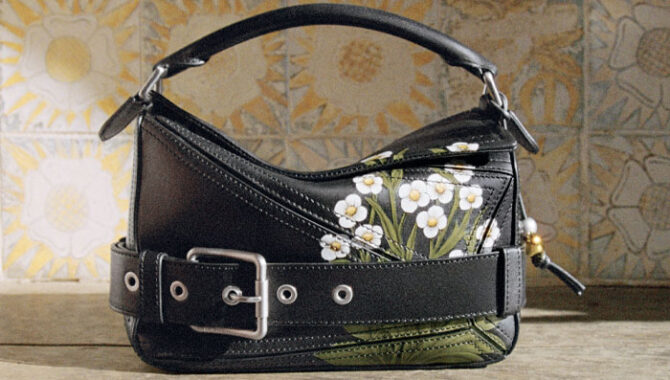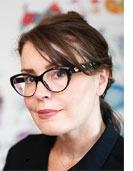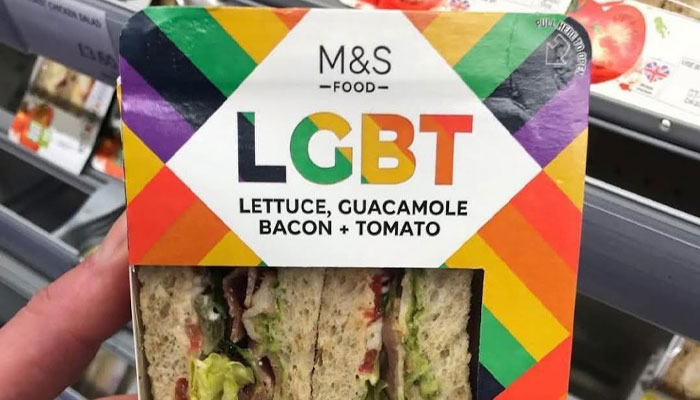—-
To stay in the loop with the latest features, news and interviews from the creative community around licensing, sign up to our weekly newsletter here

Dot Dash Design’s Paula Rich, independent creative Danny Heffer, Apparel of Laugh’s Jude Coram and Doodlebug Design’s Maria Thomas give us their half-year review.
 Paula Rich,
Paula Rich,
Owner, Dot Dash Design
How would you sum up the current health of the UK licensing market at the moment?
The UK licensing market is showing a mixed picture at the moment. While there is a general sense of resilience and innovation in the industry, external pressures – including inflation, shifting consumer spending habits and global uncertainties – have introduced a level of caution among buyers and licensors.
That said, we’re also seeing brands embrace bold partnerships, sustainability, and digital evolution as ways to remain competitive. The appetite for collaborations – especially those tied to heritage, lifestyle and sustainability – is strong, and there’s a real energy in sectors like fashion, home and wellness. However, it’s not without its challenges, particularly as businesses adapt to new economic realities and technology-driven changes.
On that, what unexpected challenges have emerged this year so far?
It was a strong start to the year, with optimism in the market and plenty of creative momentum. However, the unexpected introduction of tariffs, particularly affecting transatlantic trade, has created a ripple effect. Art licensing in the US has slowed somewhat, with buyers pausing or delaying decisions on new purchases due to increased costs. This has put added pressure on creative budgets and shifted priorities for some.
Another unexpected but major area of consideration has been the rapid evolution of AI. The licensing industry is still navigating how to integrate AI tools into design workflows, as well as whether and how to use them without compromising creative authenticity. There’s also an ongoing debate about how AI impacts originality, copyright and the value of traditional artistry. It’s not just a technical challenge, but a cultural and philosophical one too, prompting important conversations around creativity, ownership, and the future of design.
What do you see as a key trend to look for across the rest of the year?
One clear and dominant trend is the return of florals, but reinterpreted in vibrant, layered and luxurious ways. From high-end fashion to home décor and stationery, floral design is having a serious moment. Sanderson’s strong presence at the Chelsea Flower Show really underscored this – as did stunning collections like the RHS collaboration by Clare Therese Gray and the beautifully embroidered Elizabeth Scarlett bags. On Instagram, it’s clear that many independent designers are collaborating with luxury stationery and fashion brands to bring this trend to life in fresh and creative ways.
Beyond aesthetics, sustainability continues to be a major force shaping consumer expectations. Whether it’s fashion, beauty or food, people want transparency around how products are made, the materials used and the values behind the brands they support. Clean, ethical and responsible design is not just a trend anymore, but a baseline requirement in many categories.
What’s the best licensed product you have seen so far this year?
One standout for me has been the Loewe x William Morris & Co Puzzle Bag as part of the broader Sanderson collaborations. It’s a perfect example of a design-led license that defies expectations. The way it merges the romantic, intricate floral motifs of William Morris with Loewe’s edgy, modern fashion design is incredibly fresh and impactful. A painted hare and floral motif meets a biker-style silver-studded shoulder strap; two completely different aesthetics coming together in a way that feels both respectful of heritage and thrillingly contemporary. It’s a masterclass in how heritage design can be reimagined for modern luxury.

 Danny Heffer,
Danny Heffer,
Independent Creative Director
Can you identify a design trend that you have seen emerge this year and how has it made an impact in the market ?
I’m bored of saying it, but It’s been a tough year for everyone, right across the industry – from funding new content on the IP side to retailers struggling on the high street. I feel the need for some comfort at the moment… Nostalgia is a natural reaction and I see a few things appearing that speak to this.
It’s been lovely to hear that the Gruffalo is getting a new outing, 30+ years is no mean feat and so it’s terrific to hear that it’ll bring new audiences in. I’ve been working with Magic Light on some of their properties recently and they really put the work in in terms of looking for fresh new ideas. I think this is important with ‘Nostalgia’ brands. To feel current, you need to demonstrate that the brand is alive and able to be relevant today. Otherwise, it looks like something dug out of a dusty archive.
Anniversaries are a good way to demonstrate this. They call for a bit of premium and can allow a bit of space to be creative with design and push boundaries a little. With Magic Light, I’ve been looking to use their existing assets in different ways. In our frugal, budget conscious times, it doesn’t break the bank, and the budget can be focused on design and application. Hopefully we can share it soon.
Can you share any requests emerging in design briefs this year? Are brand owners are facing any new challenges designwise?
Again, it’s that need to get bang for buck. Clients are still needing to output design but as budgets are smaller, new asset creation becomes difficult. I’ve been tasked often to use existing material in new ways to give new looks. I think this is very achievable, it’s all about the idea behind it all. I see it as a fun creative challenge, there’s always something new to be done with colour or scale or application.
Going back to what I spoke of earlier, nostalgia can often be an avenue to more content. For older brands, a dig through the archives can bear fruit. A bit of crate digging can often unveil old ideas that can springboard new ideas and new ways of looking at things.
Thinking ahead for the rest of the year, can you share one design tip that you think might prove useful to our readers…
If budgets are tight, that doesn’t rule out using external designers. We bring value and we bring new ideas to the table. Budgets don’t need to be huge to explore using existing assets, existing content. Giving things a new coat of paint and a glow up can really bring something extra to the party.
Can you highlight one licensed product, promotion or collaboration that has impressed you this year?
As it was Pride week recently, this caught my eye – or rather banged my funny bone. It’s from an Instagram post so not my own spot but I just thought it was really funny, sharp and above all seemingly effortless. You can imagine the moment the creative came up with it, a bolt out of the blue and a smile in the mind. There’s nothing much needing to be done with it visually, it’s pure idea and lovely for it. Rooting around online, it seems it’s originally from 2019 and was created to raise money for The Albert Kennedy Trust. So it’s doing some good too.

With all the visual shout out there it’s good to remember that a really good idea, executed simply and clearly can really leap off the shelf.
Copywriting is often neglected but I do think a good line here and there can really elevate things. A favourite of mine from my Aardman days was a strapline I came up with for an on-pack flour promo in aid of Wallace and Gromit’s Grand Appeal. It read “We knead the dough” – boom! Two puns in one line! I felt like I’d earned a cuppa after that one.
 Jude Coram,
Jude Coram,
Owner, Apparel of Laughs
Can you identify a design trend that you have seen emerge this year?
It’s been no secret of the success East Asian culture has had over here in the West. To see their pop acts dominating the charts in the UK and USA would have been unheard of only 10 years ago, and yet Japan, China, and South Korea are now cultural powerhouses all over the world.
This has really changed the current trending styles too. A lot of design in the West leans very much on nostalgia, but the last 100 years has been used in so many different ways that there isn’t as much space to innovate. You can take your cues from the 1970s for fun, bright, rounded looks, or go “old timey” back to the 1890s with big fonts and vintage etching style. But most can see any design and tell you almost to the decade where you got that style from.
The beauty of tapping into the East Asian design scene, is that over the last 100 years they have had just as much design progress and innovation, but most of it was never transported over to the USA or UK. It wasn’t until the late 80s and 90s that we started to be influenced by Japanese design when Sony’s PlayStation and Walkmans become huge parts of Western culture. Even more recently, Chinese design and culture has opened up new, exciting and fresh ideas we can draw from over here. It works so well in the West because some of our design clichés are fading, so we have access to new possibilities and styles once hidden on the other side of the world.
This has really influenced the current design trends in my opinion. Something like the Y2K aesthetic draws on classic imagery of old video games and tech advertising that mostly came from Japan. With bold fonts, shiny gradients and big imagery, the youth in the West are reliving the late 90s and early 2000s in the image of the Japanese culture of its day. We can hark back to the good old days of countries that we do not live in, nor do we have a shared past with them – yet these styles seem nostalgic in a way that really speaks to us.
Whether this trend will continue through the rest of the 2020s, and East Asian culture becomes bigger and bigger, or if designers have taken the best elements already and assimilated it with Western design, remains to be seen. But this could prove fertile ground for years to come. If Western design feels samey, we now have years and years of culture we can tap into from new and exciting design traditions from all over the world!
Do you feel brand owners are facing any new challenges designwise at the moment?
Authenticity is a buzzword I’ve been hearing a lot. Brands that look like they are here today and gone tomorrow will not get the same response from the buying public. If your branding is following current trends, it might do well in the short term, but establishing it in the long term is much harder.
Imagine walking down the high street and you see a shop with a printed banner as its shop sign. Would you trust it compared to the shop next door that has invested in a proper 3D custom shop sign? Companies that use AI for branding and logo design might save themselves some money upfront, but will lose out eventually as customers realise they might not be in it for the long term. If a company is happy to quickly produce branding within a few hours, might they be the best choice to purchase from if their service might be as slap dash?
When I’ve been designing branding, the trustworthiness of the designs is the key factor. Serif fonts hark back to days gone by, when every shop was bricks and mortar. Using faces of real customers with more homely surroundings works better than stock images and helps build authenticity. Avoiding flash in the pan styles and techniques brings longevity.
Does this look like it could be here in 10 years’ time? Is this following a trend that would make it look old fashioned and need to be changed? Does it look like time and effort has been put into this? I believe these are the questions that more and more businesses, designers and marketers are asking in the AI-fuelled, temporary, low-effort content world of the web today.
Can you share one design tip or insight that you think might prove useful to our readers….
Firstly, if you or your business are thinking of a rebrand ask yourself these questions: Do we actually need one? Is this just for PR? If we change now, will we need one in 10 years’ time?
Anyone who keeps their ear to the ground will know about the many different rebrands we’ve been seeing in many different markets across the world. So many well-established businesses are taking the expensive plunge to rebrand, and let’s be honest, the public reaction never seems to be great. They say that any publicity is good publicity, but if people are having to take a few extra seconds to recognise your new logo, that could make all the difference. You’d think I would be advocating for more rebrands as a designer myself, but my experience tells me that if something isn’t broken it really doesn’t need “fixing.” Don’t change things for the sake of it. The 2020s is a very nostalgic decade with almost every new design trend piggy backing off an old one, so your branding is probably pretty on trend as we speak.
Secondly, just like our new appreciation of East Asian cultures, designers should look to the globe for new and exciting trends. I was fortunate to enjoy a brief holiday in France last year, and loved seeing the cultural differences between our two countries. I’m a big comic fan, so seeing the way in which the French display, draw, and revere their comics was something to behold. Our style of comic is different here in the UK, and both cultures could probably learn from the other. I’m positive this is the same within design trends and styles. Graphics in 1960s Mexico will look entirely different to graphics from 1960s Russia. As I said, the 2020s don’t really have a distinct style, as most of what we have is rehashed styles from the past. So, if that is the case, let’s get some more exciting styles and search a bit wider for inspiration. Why not look into album art from Nigeria, jazz posters from Cuba or ticket stubs from the Brazilian subway? Inspiration is everywhere, and maybe one of these is the new trend which everyone will get on board with.
Can you highlight one licensed product, promotion or collaboration you have seen this year that impressed you?
One that really appealed to me is the LEGO collaboration with Formula 1. I’m a big F1 fan and still have a love for LEGO from my childhood, so when I saw they had created some new sets of the cars, I had to have a look.
A trend I’ve been seeing recently is a huge surge towards selling items in blind boxes – another East Asian import. Customers don’t quite know what they will be getting when they open the product in the box. LEGO has been doing this quite a while with their collectable minifigure ranges but have utilised the selling style perfectly for their new F1 range too. Not only are they selling larger models featuring classic F1 cars from yesteryear, they are also selling small versions of this season’s cars in blind boxes. This means you know more or less what you will be getting – a small LEGO F1 car – but you don’t know which car exactly.
I bought one and got one I liked so I told myself I didn’t need to buy any more. But you could easily get a car you didn’t really fancy, and then buy a few more hoping for a better one. A very clever way of people trying to get the whole set. Aside from the smart business strategy, it is an affordable and fun way for F1 fans to buy a little shelf filler to represent their love for their favourite sport. You could imagine them doing this with the Premier League teams perhaps with a LEGO figure for each star player of each team. LEGO Mo Salah anyone?

 Maria Thomas,
Maria Thomas,
Director, Doodlebug Design
Can you identify a design trend that you have seen emerge this year?
I know the obvious is to say is AI, but for me this has only really come into our work this year. It’s a useful tool to help with thinking processes and any help with innovative and out of the box suggestions are great. I think this will help to move the market at a quicker pace. Having said that, although I like to think I am forward thinking and happy to move with the times, for me a good brainstorming session with colleagues is a far more interesting and helpful way to collect ideas from different mindsets!
Can you share any new elements or requests emerging in design briefs this year with us?
Design briefs requests haven’t changed so much, but we are generating a lot more final artworks much earlier than previous year’s due to high demand for production samples for sales purposes. I think brand owners face challenges every year to keep things new and interesting for the licensees and designers… Following trends and creating innovative stories can be tricky year after year, but we have seen some great design assets.
Can you share one design tip or insight that you think might prove useful to our readers….
Don’t totally rely on AI or the internet for all your ideas, even if it is time saving! Keep your brain active and be creative, visit exhibitions, go to the stores, look around you, see what’s out there… What’s the worst that could happen? You could have a great day out of the office away from your computer and refresh your mind ready to tackle the next job!
Can you highlight one licensed product, promotion or collaboration you have seen this year that impressed you?
Mummy Pig being interviewed by Richard Arnold live from Peppa Town on Good Morning Britain was brilliant. That was a very clever way to tell us all her family was growing as she was expecting a baby! And then they made a royal announcement of the birth on GMB with the report making it onto the evening news and the daily newspapers! Genius! The design assets to go with this story are really beautiful so you will see some stunning product going out there.

Enter your details to receive Brands Untapped updates & news.